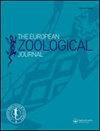The first records of Niphargus hrabei and N. potamophilus in Ukraine and Bulgaria significantly enlarge the ranges of these species
IF 1.6
4区 生物学
Q2 ZOOLOGY
引用次数: 1
Abstract
Abstract Niphargus comprises hundreds of narrowly-endemic West Palaearctic subterranean taxa. However, a few exceptional species inhabit surface waters and have remarkably large ranges. Herein, based on morphological and molecular analyses, we provide important new records for two of these species. N. potamophilus, previously known from the eastern Azov Sea lowlands, is reported for the first time from Ukraine and Bulgaria from localities adjacent to the Black Sea. These findings expand its range westward by more than 1000 km along the coastline. From Bulgaria, we also report for the first time N. hrabei, a species previously known to occur along the middle and lower Danube lowlands and in isolated populations at the foothills of the Northern Caucasus. Our new record thus extends its range southwards by more than 150 km. Both species contained unique haplotypes at all of the sampled localities. These were, nevertheless, not very divergent from more distant populations, emphasizing their good dispersal ability. Ecologically, the sampling localities were generally characterized by stagnant to low running water, dense vegetation, and muddy substrate. Overall, our results bring important insights, shedding more light on the biogeography and ecology of Niphargus.在乌克兰和保加利亚首次记录到的赫拉贝Niphargus hrabei和potamophilus显著扩大了这些物种的范围
摘要Niphargus包括数百个西古北界特有的地下分类群。然而,也有一些特殊的物种栖息在表层水域,它们的活动范围非常大。在此,基于形态学和分子分析,我们为其中两个物种提供了重要的新记录。potamophilus,以前在亚速海东部低地被发现,首次在乌克兰和保加利亚黑海附近地区被报道。这些发现将其沿海岸线向西扩展了1000多公里。在保加利亚,我们还首次报道了N.hrabei,这是一种以前已知的物种,分布在多瑙河中下游低地和北高加索山麓的孤立种群中。因此,我们的新记录将其范围向南扩展了150多公里。这两个物种在所有采样地点都包含独特的单倍型。然而,这些种群与更远的种群并没有太大的差异,强调了它们良好的传播能力。从生态学角度来看,采样地点通常具有停滞到低流水、植被茂密和基底泥泞的特点。总的来说,我们的研究结果带来了重要的见解,为Niphargus的生物地理学和生态学提供了更多的线索。
本文章由计算机程序翻译,如有差异,请以英文原文为准。
求助全文
约1分钟内获得全文
求助全文
来源期刊

European Zoological Journal
Agricultural and Biological Sciences-Animal Science and Zoology
CiteScore
3.10
自引率
5.60%
发文量
80
审稿时长
30 weeks
期刊介绍:
The European Zoological Journal (previously Italian Journal of Zoology) is an open access journal devoted to the study of all aspects of basic, comparative and applied protozoan and animal biology at molecular, cellular, tissue, organ, organismal, population, and community-ecosystem level. Papers covering multiple levels of organization and integrative approaches to study animal form, function, development, ecology, evolution and systematics are welcome. First established in 1930 under the name of Il Bollettino di Zoologia, the journal now has an international focus, reflected through its global editorial board, and wide author and readership.
 求助内容:
求助内容: 应助结果提醒方式:
应助结果提醒方式:


